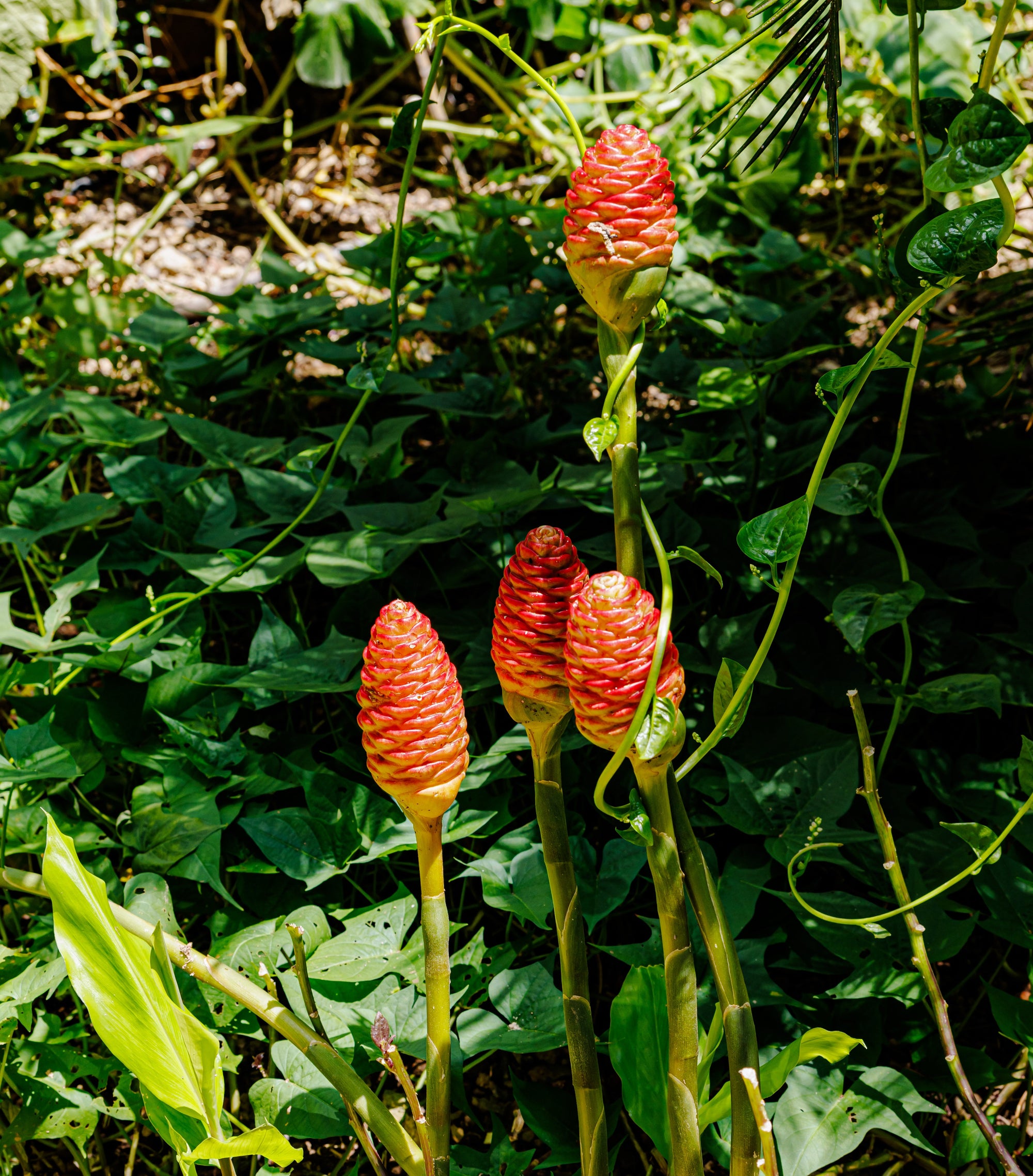
Pinecone Ginger / Awapuhi (Zingiber zerumbet) | Fresh Rhizomes
Fresh Pinecone Ginger rhizomes and cones
Grown in northern Thailand and freshly harvested for each order, Pinecone Ginger rhizomes are full of vitality. The plant’s cones naturally accumulate water from the roots, producing a fragrant liquid highly valued as a completely natural shampoo or lotion.
Used for:
By gently squeezing the cones, a natural shampoo or body lotion is released, used for centuries in tropical regions. It is probably the most sustainable and rewarding lotion there is, since it is self-refilling. The rhizomes themselves also find a place in traditional remedies and household use.
 Extra info about Beehive & Pinecone Gingers
Extra info about Beehive & Pinecone Gingers
In our farm we grow both Beehive / Shampoo Ginger and Pinecone Ginger / Awapuhi (Z. spectabile and Z. zerumbet).
Now we also have Black Pinecone Ginger (Z. zerumbet) available. It has a slightly different aroma than the other two species - although it has a zesty and fresh smell just like the other two.
Zingiber spectabile and Zingiber zerumbet are two different species of flowering plants belonging to the Zingiberaceae family. While they share the same genus "Zingiber," they have distinct characteristics that set them apart from each other. Here are the main differences between the two:
1. Common Names: Zingiber spectabile is commonly known as "beehive ginger" or "shampoo ginger," while Zingiber zerumbet is often called "awapuhi" or "pinecone ginger."
2. Appearance: Zingiber spectabile - Beehive ginger - is a large herbaceous plant that grows up to 2 meters in height. It has long, green leaves and produces cone-shaped flower heads that resemble beehives. The bracts surrounding the flowers are usually bright red or yellow. On the other hand, Zingiber zerumbet - Pinecone Ginger - is a rhizomatous perennial with tall stems that can reach around 1-3 meters in height. It has elongated, lance-shaped leaves and produces cone-like flower heads that resemble pinecones. The bracts surrounding the flowers are typically red-pink.
3. Geographic Distribution: Zingiber spectabile is native to Southeast Asia, particularly Thailand and Malaysia. Zingiber zerumbet, on the other hand, is native to the Indian subcontinent, but it has also been introduced to various tropical regions worldwide.
4. Growth Requirements: Zingiber spectabile prefers moist and well-draining soil and thrives in partial shade or filtered sunlight. It is less tolerant of cold temperatures compared to Zingiber zerumbet. Zingiber zerumbet, on the other hand, can tolerate a wider range of conditions and is more adaptable to different soil types. It can grow in full sun to partial shade and is relatively cold-hardy.
These are the key differences between Zingiber spectabile and Zingiber zerumbet. While they belong to the same genus, their distinct characteristics make them unique and suitable for different purposes.
 Pricing by Quantity
Pricing by Quantity
Our rhizome prices follow a simple principle: the more pieces you order, the lower the price per piece. This way you get better value when buying larger amounts, while we can pack and ship more efficiently.
 How we pack
How we pack
1. Each rhizome is gently cleaned, dried, and dusted with cinnamon powder for natural mold protection.
2. We wrap them in moist sphagnum moss or coconut coir to keep them fresh.
3. The wrapped rhizomes are placed in breathable biodegradable sleeves with small air holes.
4. Finally, everything is cushioned in sturdy boxes with natural fillers so they arrive safe and full of vitality.
Naturally grown
Grown by local farmers through traditional methods.
0% chemicals
No chemicals = healthy produce & ecosystem.
Community-driven
We always look for ways to give back to our local community.
More clean produce to explore
This is our channel to share what we and our local community has grown with care and authenticity for you.
Check out our organically grown mountain coffee. ☕️









